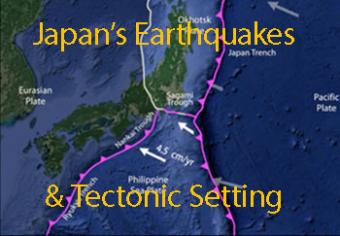
Why is the tectonic setting around Japan so complicated?
Earthquakes, volcanoes, and trenches all result from Japan being wedged among four major tectonic plates. The Pacific Plate subducts beneath the Okhotsk Plate at the Japan Trench. The Philippine Sea Plate subducts beneath central and southwest Japan at the Sagami Trough, the Nankai Trough, and the Ryukyu Trench. A complex structure accommodates slow east-west convergence between the Okhotsk and Eurasian plates.
Densely populated Japan is at the mercy of both offshore megathrust earthquakes that generate tsunamis and shallow on-shore crustal fault earthquakes that shake vulnerable overlying cities. Because of this, Japan has taken major steps to help mitigate disasters by creating one of the most effective earthquake early warning systems in the world and by engineering and seismically retrofitting their infrastructure (buildings, roads, railways). 96% of citizens successfully evacuated the tsunami inundtion zone during the 2011 earthquake. Tragically, almost 20,000 lives were lost.
CLOSED CAPTIONING: A .srt file is included with the downloiad. Use appropriate media player to utilize captioning.
This animation addresses:
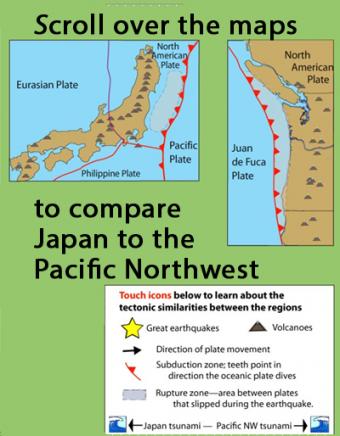
Learn how the Pacific Northwest tectonic setting and megathrust earthquake of January 1700 is similar to the catastrophic earthquake in Japan in 2011 by touching icons on this interactive map.
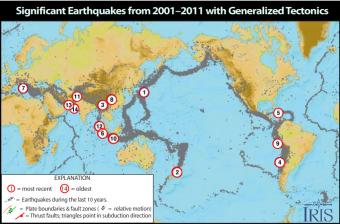
Causes and casualties of the 14 most-significant earthquakes of that decade. This Flash rollover reveals facts about each of the earthquakes.
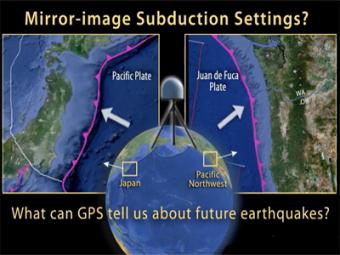
This UNAVCO animation compares Japan's subduction zone at the location of the 2011 earthquake with a mirror-image subduction zone in the Pacific Northwest. There are many similarities.
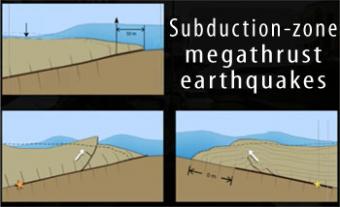
Subduction-zone megathrust earthquakes, the most powerful earthquakes in the world, can produce tsunamis through a variety of structures that are missed by simple models including: fault boundary rupture, deformation of overlying plate, splay faults and landslides. From a hazards viewpoint, it is critical to remember that tsunamis are multiple waves that often arrive on shore for many hours after the initial wave.

The March 11, 2011 earthquake and tsunami was a tragedy. Research done since that earthquake has revealed ways in which earthquake and tsunami alerts can be done much more quickly.